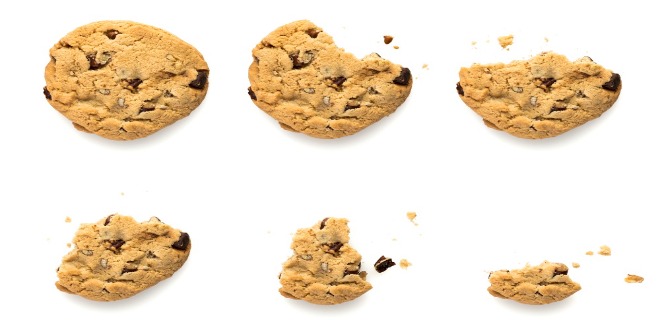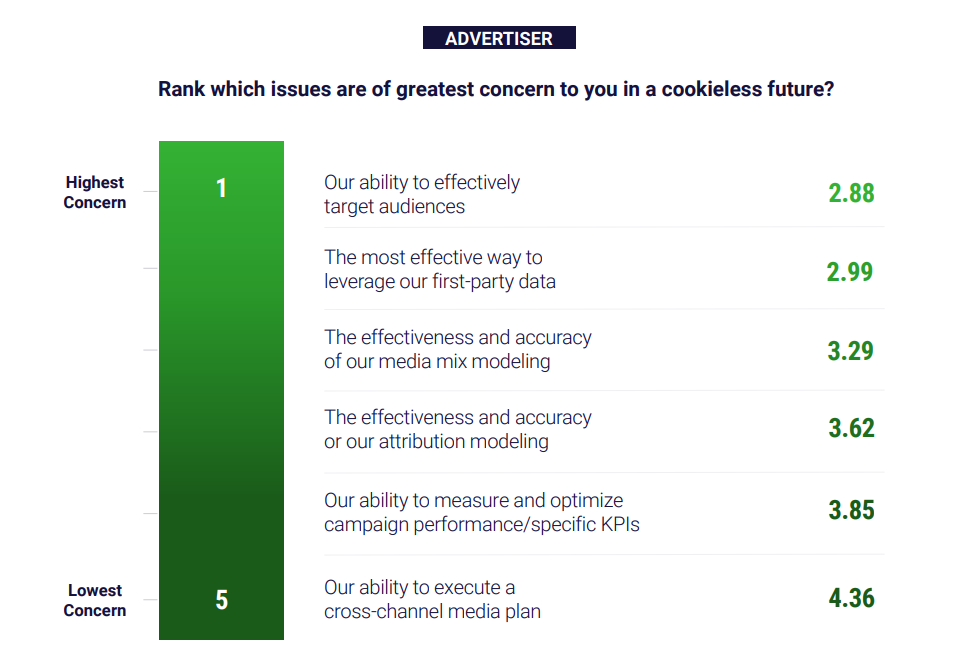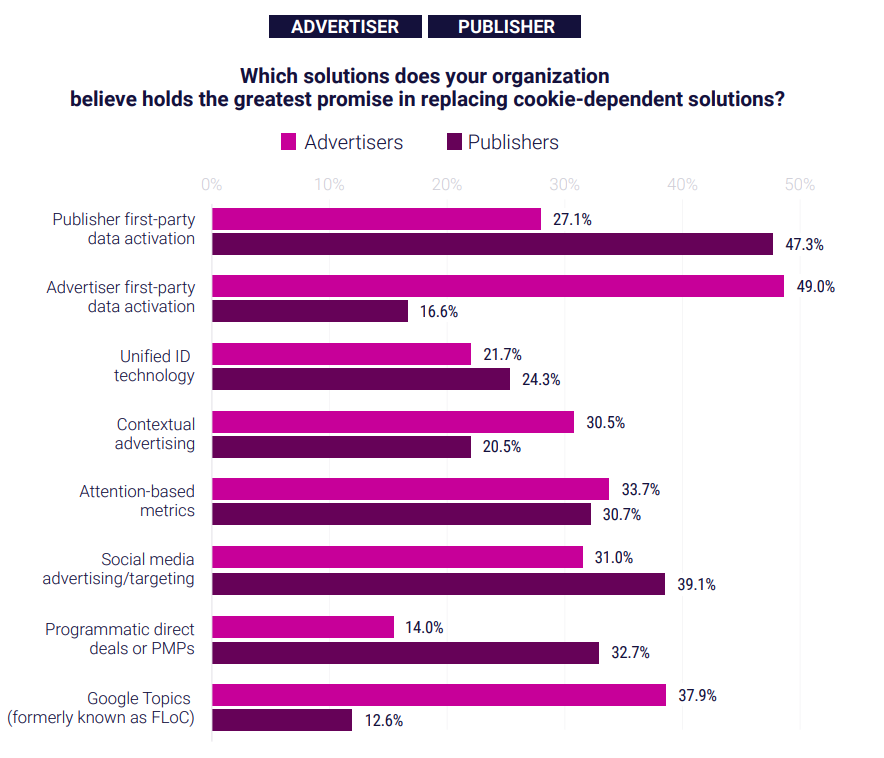
Buy-side, sell-side, and every other nook and cranny of the ad tech ecosystem raised alarm bells a few years ago when Google first announced the annihilation of the third-party tracking cookie.
And ever since, the tech behemoth has continually delayed the cutoff date, with the latest now the midpoint of 2024. But that has not stopped publishers and advertisers from preparing for a post-cookie world, at least not most of them.
The delays can be attributed to publishers and advertisers needing more time to prepare for how this major tech change will alter their business processes, according to Anthony Chavez, VP of Google’s Privacy Sandbox initiative. While advertisers are worried about maintaining performance and measurement goals, publishers are concerned about how the changes will impact their revenue and business operations.
Both sides have experimented with varying solutions, including ID solutions, data clean rooms, contextual targeting, and the Privacy Sandbox. Overall, industry concerns have lessened since last year, According to a study by DoubleVerify, sentiments are becoming more optimistic, and publishers and advertisers are beginning to see a light at the end of the tunnel.
Rose-Colored Glasses: Optimism Abounds
The industry is optimistic about the post-cookie future, but that does not mean publishers and advertisers are worry-free.
Media verification company, DoubleVerify, polled publishers to see how many were concerned about the impact of cookie deprecation, and 59.9% said they were either “somewhat concerned or moderately concerned.” However, publishers who were “very concerned” decreased by 42.6%, and those who were not concerned doubled.
On the buy side, advertisers emphasized that their biggest concern was multiple browsers phasing out third-party cookies. This issue was the top concern for advertisers in 2022 at 38.5% and increased to 45.1% this year.
Publishers and advertisers are worried about finding the best solution and workflow for their businesses. Many third-party solutions — Alternative IDs, Seller-Defined Audiences, Email-hashing — exist, but companies are still testing them. Currently, only 24% of publishers surveyed had a post-cookie solution. This is why buyers and sellers believe that Google might delay third-party cookie deprecation further.
Other concerns include:
Publishers: They are concerned about their revenue projections. In 2022, 63.8% of publishers thought their revenue would increase after third-party cookie deprecation, but in 2023 their revenue fell to 48%.
Advertisers: They are worried about their ability to target audiences effectively, the most effective way to leverage first-party data, and the effectiveness and accuracy of media mix modeling.
Publishers and Advertisers Seek Common Ground
About 80% of respondents believe that direct advertiser to publishers partnerships will be paramount once the third-party cookie goes away. Although publishers warned they would only partner with publishers with robust first-party data to share. Direct relationships often enable that.
Contextual solutions are also top of mind for the buy and sell side as they search for privacy-centric methods to maximize scale and performance. Ads perform better with consumers when they are more relevant, and context-based advertising generally creates a better UX for consumers.
Publishers see the importance as well. A staggering 96% of publishers asserted that contextual advertising would be essential for their business in 2023. On the buy side, advertisers’ sentiments are the same. About 93% of advertisers said they use contextual advertising for some or most of their purchases this year. Both sides see promise in context as replacing cookie-dependent solutions.
There is some disagreement between advertisers and publishers. Buy and sell provided mixed responses when asked which solutions hold the most significant outcome for replacing cookie-dependent advertising. Confidence around Google’s solutions, programmatic-direct deals, and first-party data hierarchy were the biggest misalignments.
Publishers V. Advertisers: The Fight For First-Party Data Supremacy
On the advertiser side, about 60% boasted about their first-party data capabilities. Almost half of the advertisers surveyed agreed that their first-party data activations are the cookie-independent solution with the most promise.
On the other hand, publishers are working to improve their first-party data capabilities. One top priority is ensuring their first-party data sets are more appealing to buyers. 73% of publishers invest in first-party data collection strategies, and email marketing is the most common tool for growing first-party data sets.
Transparency is vital, and publishers say their first-party data activations need improvement. Publishers who described their first-party data activations as “very good” declined 35% this year. Their data sets aren’t abysmal, but they know they have work to put in.
Both parties highlight that third-party metrics will remain essential to digital advertising transactions despite third-party cookies going away. The survey says, “Combining first-party data with third-party metrics related to context, brand suitability, viewability, and attention can help publishers better position their offerings in the marketplace.”
Vying For Consumer Attention
Finally, attention metrics will be a crucial focus for both publishers and advertisers in 2023. They see its value as an advertising currency. Both groups rank attention high on their lists as a focus for measurement when third-party cookies disappear.
Publishers: Publishers have already adopted industry sentiment, with 94% of publishers describing attention as “moderately important” or “very important” to their business this year. Those same publishers indicated confidence in their attention-based capabilities, with 77% stating that their offering was either good or better.
Advertisers: Ninety-six percent of advertisers plan to rely on attention-based metrics in most or some of their ad buys in 2023. While only 28% of advertisers ranked publisher attention-based offerings as “very good,” they seem satisfied overall with what they see in the marketplace.
Publishers and advertisers must recognize the ability of these metrics to quantify ad performance accurately and meaningfully as a privacy-friendly measurement and optimization tool.


